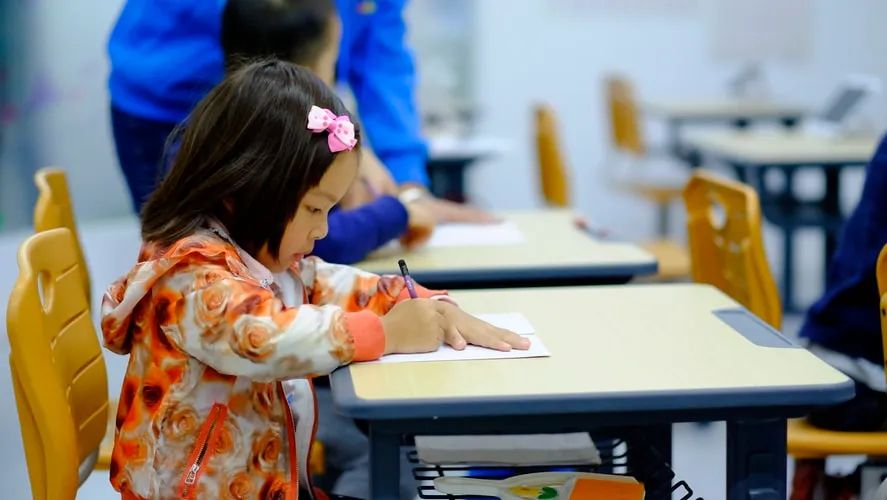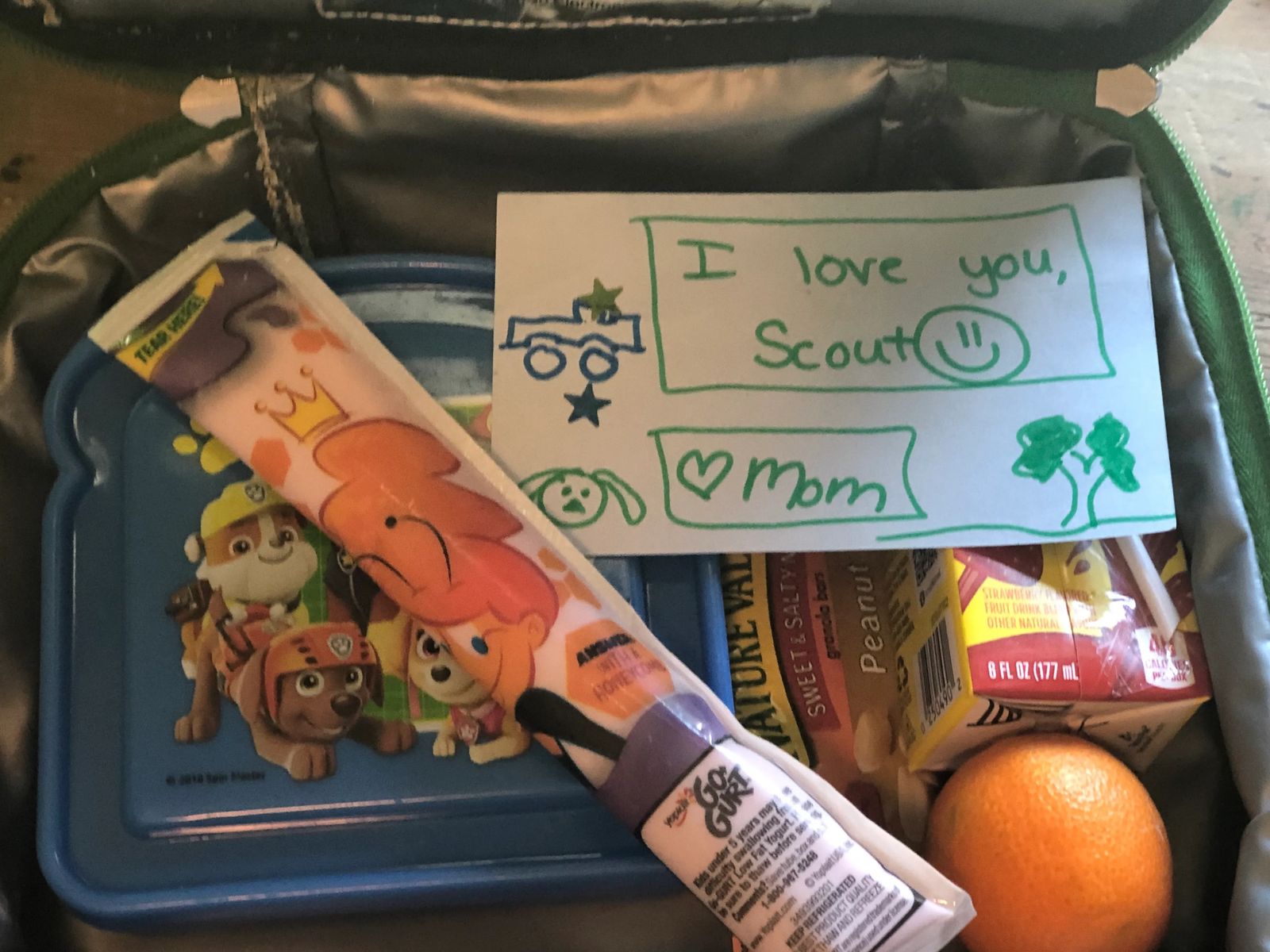
photo by Jerry Wang via Unsplash
Big Transitions for Littles
August 7, 2020 | by ashlynn reynolds-dyk
The big kindergarten transition starts with the dreaded kindergarten shots and goes on from there! Actually, many children handle the transition to kindergarten very well. As Ms. Kaupish, kindergarten teacher at South Elementary in Laurel notes, some kids will walk through the gate (or doors) on their first day of kindergarten and never look back. Others, however, do have a harder time adjusting. And for some, it doesn’t catch up to them until the newness or excitement has worn off.
With that said, there is no one-kind-fits-all solution for children who are experiencing difficulties with big transitions like the one to kindergarten. In this month’s issue of Simply Local Magazine-Billings, I wrote about the importance of giving your child tools for expression and demonstrating empathy to help with the big transition. There are many more tried and true tips that can help you and your child be successful as this transition unfolds, however, so here they are:
Familiarity and Relating: Create as much familiarity and as many connections between your child’s school life and home life as possible. Ms. Kaupish, Ms. Wilson (Sandstone Elementary), and Lorinne Burke (Northwest Counseling Center, LLC) all emphasized the importance of this particular point. They encourage parents to attend, with their children, the open houses, take a tour, and play on the playground if possible. Lorinne also encourages parents to relate to their children, telling them stories about their own experiences with beginning school—let them know others have done this too, and may have shared similar thoughts and feelings to what the child feels. Family stories like this, Lorinne says, help children build resilience.
Communication: If your child is struggling, let their teacher know what is going on and ensure you are on the same page. Ms. Kaupish explains that teachers are often just as anxious to make sure your child feels safe, comfortable, and happy in their new environment. Keep in mind that your school has counselors as well. If your child seems to be struggling more than you think they should be, you can talk to the school counselor.
Separation: Be honest and make it quick. If your child is struggling at drop-off or whenever it is that you need to physically separate, do not continue to agonize over it or wait for them to settle down. That simply extends the amount of time they have to be anxious about you leaving and it tends to escalate the situation. Most children stop being upset within minutes of their caretaker leaving, so make it quick. This also sets the expectation for future separations/drop-offs. In addition, do not lie or trick your child so that you can leave as this tends to create distrust, increases separation anxiety, and makes future separations more difficult.
Lunch: There is a great deal of research that says school lunchtime can be one of the most overwhelming parts of the day for kindergarteners (my little guy stopped eating his lunch all together). Some things parents can do is practice what school lunchtime will be like with their children at home (remember the “familiarity” tip?). If your child will be bringing their own lunch to school, have your child practice eating their cold lunch to make sure they can open everything (e.g. can they open the zipper on lunch box, sandwich container, or cracker bag?—can they peel their orange and/or get their drink open—do they need help getting a straw in their drink?, etc.). If your child will be eating school lunches, practice the lunch line walk-through. Set out the plate, utensils, etc., and create a food line for your child to practice getting their food (and speaking loudly to the cooks/servers) and carrying their plate/tray to the table. If there are siblings, get them involved as that can be very helpful especially if older siblings have attended the same school and can offer specific advice.
- With my son (who I talked about in the August issue, although he could do everything he needed to do, he was simply so anxious about being at school that he just couldn’t eat. So, I started writing him a note in his lunch box each morning (just a couple words and symbols or a little picture)—this gave him something to look forward to. I also communicated with his teacher and asked if it was okay for me to include one pencil and a small sheet of paper (2x3) for him to draw a picture to send back to me. This created a needed connection with mom while he was at school and turned out to be a helpful way of refocusing his energy from a negative (missing mom/dad/sis/home) to creating a positive surprise for mom and having that to look forward to when he got home.

Patience and Managing your Emotions: Remember that transitions can take time. For some, the transition to kindergarten may not seem like anything while for others it happens quickly over the course of a week, while for others it takes a couple of months. So, give it time, and as Ms. Wilson suggests, give your child some grace if they are struggling (and give yourself some grace, too). With that in mind, keep your own emotions in check. Heightened emotions on your end will be difficult for a child to process. Try not to get angry, frustrated, or sad in front of your child (although it is certainly expected that you may feel some of these emotions). Lorinne Burke explains,” sometimes kids can calm down when they realize their parent is remaining calm… ‘Oh, this must not be a big deal since mom isn't freaking out or telling me not to feel that way.’”
Routine and Schedule: Ms. Wilson suggests starting your bedtime, wakeup, and morning routine a couple weeks before school starts to help with a smoother transition. Help your child to understand this schedule and even understand the school day routine as much as possible.
Shopping and Involvement: Let your child go shopping with you (which may have to take place online this year given concerns about public health) to choose their school supplies—let them get excited about their new scissors, backpack, lunchbox, first day of school outfit, etc. The more you can involve your child in the process, the better.
Safe Place: Keep in mind that kindergarten is a long day full of a lot of work learning new rules and routines. Children spend large amounts of energy learning and doing things correctly, and sometimes when they get home to their safe haven, they can fall apart. If your child comes home from school and seems to be acting out while their teacher says they are doing great at school, it is likely related to this concept. Your child knows they can fall apart at home and still be loved and supported. Again, be patient, and give your kiddo some grace.
Give Yourself Grace: Every child and every adult is different; no one knows how to transition perfectly although you might look around you thinking everyone is doing it so much better than you.
Continue to Bond: And finally, because you can never have too many books or read too much to your child, here are a few more book suggestions offered by Ms. Wilson, Ms. Kaupish, and myself:
- Miss Bindergarten Gets Ready for Kindergarten, by Joseph Slate (Illustrated by Ashley Wolff)
- Seven Little Mice Go to School, by Kazuo Iwamura
- Pete the Cat: Rocking in My School Shoes, by Eric Litwin (Illustrated by James Dean)
- Mom, It’s My First Day of Kindergarten, by Hyewon Yum
- Yoko Learns to Read, by Rosemary Wells
- In My Heart: A Book of Feelings, by Jo Witek
- First Day Jitters, by Julie Danneberg
- Chrysanthemum, by Kevin Henkes
- David Goes to School, by David Shannon “I Like Myself” by Karen Beaumont
- If You Take a Mouse to School, by Laura Joffe Numeroff





